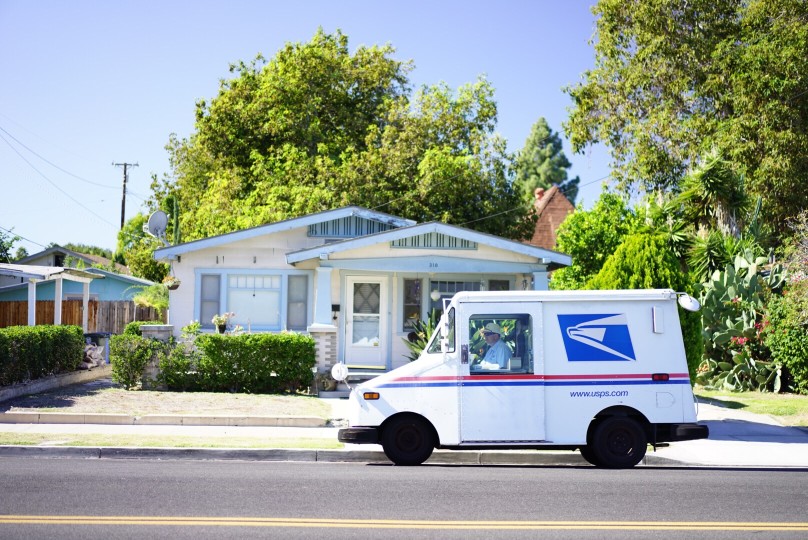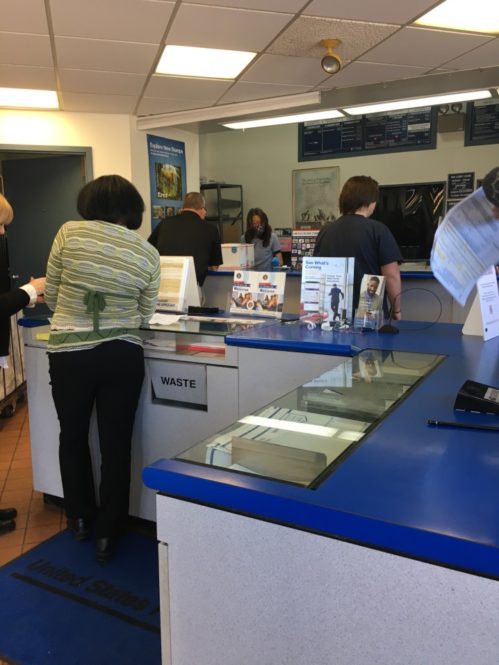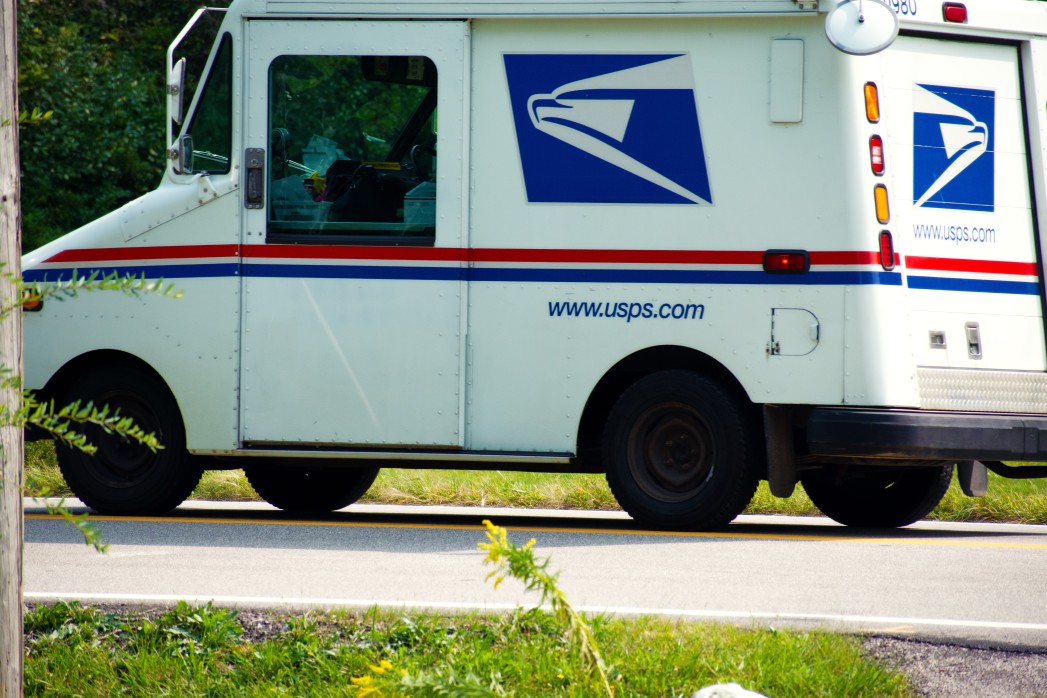Sending Certified Mail doesn’t have to be scary. You’ve probably received your fair share of Certified Mail in the past too. Well, now it is time for you to know exactly how to harness the power of this United States Postal Service feature.
So, without further ado, let’s get straight into the specifics!

What Is Certified Mail USPS?
Certified Mail, as we have just mentioned, is a feature provided by the United States Postal Service. It gives you a mailing receipt or electronic verification that your parcel or letter has been delivered (or that delivery was attempted).
It is a numbered service that gives you the following items:
- A refund — some items are completely exempt from refunds. Make sure you check this beforehand. Also, we should note that you are given a refund on the service charge only, not the postage fee.
- Proof of signature — you have to choose this when you mail your item. This is called the “Return Receipt Service”. You can decide whether you want to receive it via snail mail or electronically.
- A mailing receipt — if you’re interested, click here to see an example.
- A record of delivery — this includes a copy of the recipient’s signature. It will be kept by your Post Office for two years from the date you sent the item.
- The status of delivery — you can access this in three ways. Let’s have a closer look at each.
Using The Bulk Electronic File Transfer Service
To use this service, you must give the USPS an electronic manifest. They will then show you the status of your Certified Mail items this way.
By Telephone
You will have to ring the dedicated phone line found on the USPS contact page. Ensure you know your tracking number otherwise they won’t be able to help you.
Using The Internet
This will probably be your preferred method. Just go to the United States Postal Service website and enter your tracking number on your mailing receipt.
Alongside all of this, you can combine Certified Mail with some other services, but we’ll look at all of that in detail a little later.
What Is Certified Mail Used For?
While anyone can send Certified Mail, it is most commonly sent by businesses.
You will have likely received Certified Mail from debtors, the IRS, attorneys, and for jury duty. It works very well for legal documents or anything that requires an intense amount of security.
Plus, even if you do not sign for it, Certified Mail will still show that it came for you. Thus, it can be used against you in legal proceedings because you can’t claim it never arrived. In other words, it can be proved that someone tried to contact you.
The main thing to remember is that anyone can send it. So don’t automatically get nervous if you get a piece of this mail through your door! Sometimes, it might even be good news. Not to mention that some eCommerce stores will use it so their items definitely reach you.
What Is Certified Mail Restricted Delivery?
You can combine Certified Mail with the Restricted Delivery services offered by the United States Postal Service. These include the following:
- Certified Mail Restricted Delivery — with this option, only the person on the address slip can sign for the letter, package, or parcel.
- Certified Mail Adult Signature Required — with this option, anyone over the age of 21 can sing for your letter, package, or parcel.
- Certified Mail Adult Signature Restricted Delivery — with this option, the person you write onto the address slip has to be over 21. They’re the only person who can sing for your letter, package, or parcel.
To put it simply, Restricted Delivery ensures that only the addressee can receive your mail. It is commonly used for sensitive pieces like contracts, high-value packages, legal documents, and classified or confidential papers. Using this service means your recipient must validate his identity before the United States Postal Service carrier will allow them to have the piece of mail.

What Is The Cost of Certified Mail?
This was probably the first question that came to your mind when you started thinking about Certified Mail, right? Well, let’s answer that for you!
The United States Postal Service provides this service for $3.35. However, you will be paying this on top of the Priority Mail or First Class Mail charge to send your package, parcel, or letter.
Additionally, for those of you who are after a return receipt too, it will cost you a little bit extra. If you want it delivered to you via snail mail, you will have to pay $2.75. If you want it delivered to you electronically, then you will pay around $1.45. It’s a lot easier to go for the electronic option — not to mention cheaper!
What Is The Difference Between Certified and Registered Mail?
As you now know, Certified Mail is a service that gives you (i.e. the sender) proof of the delivery and billing. Plus, you acquire a copy of the recipient’s signature once the USPS has handed over the package, parcel, or letter. Both Priority Mail and First Class Mail can be sent using this Certified service.
Since this type of mail service is sent out alongside the regular mail, it tends to be cheaper. However, as we mentioned earlier, you will have to pay a bit extra if you’re looking for a return receipt too. Bear in mind, this is not ensured. If you need or want it to be, then you have to pay a fee.
Registered Mail, on the other hand, is a service offered by the USPS that provides records of the letter, parcel, or package’s location when it is handed over from one place to the next. You (again, the sender) can track the item at every point of the process thanks to the barcode registration labels.
This mail type is sent separately from the regular mail and it does take a tad longer to arrive at its destination. Plus, Registered Mail is more expensive. Typically, it’s used to send valuables or incredibly important paperwork because you can insure the contents for up to $25,000.
To make the differences between Certified Mail and Registered Mail clearer, have a look at the handy table below.
| Certified Mail | Registered Mail |
| Gives the sender proof of billing | Gives the sender records of the letter, parcel, or package’s location when it’s handed over from one place to the next |
| Gives the sender proof of delivery | Barcode registration labels allow the sender to track the item |
| Gives the sender a copy of the recipient’s signature once the parcel, package, or letter has been received | It is sent separately from the regular mail |
| Priority Mail can be sent as Certified Mail | It can take longer to arrive because of the above point |
| First Class Mail can be sent as Certified Mail | It is more expensive than Certified Mail |
| Gives the sender a tracking number (i.e. a mailing receipt) | Used to mail valuables or incredibly important paperwork |
| Sent with the regular mail | Can be insured up to $25,000 |
| It is cheaper than Registered Mail | |
| Not insured |

Can I Pick Up Certified Mail If I Don’t Have the Slip?
In short, no. Without the slip, the United States Postal Service can never be sure if they’re releasing the package, parcel, or letter to the right person. Whether your dog’s eaten it, you’ve lost it, or you’ve drowned it in the sink, they won’t be able to give you your item. So, make sure you take good care of it.
However, if you do end up losing it, then you have to schedule a redelivery online. Of course, you have to enter information about your item including the following:
- The name on the item
- The date you received your delivery attempt slip
- The address on the label
- The item number (if you don’t have the slip, this will be tricky to remember)
If that doesn’t show you how important the slip is when you go to retrieve your Certified Mail item then nothing will!
What Happens to Certified Mail That Is Not Delivered?
The first delivery attempt of your Certified Mail will happen within three to five days. At this point, if there isn’t anyone to sign for the package, parcel, or letter, the United States Postal Service carrier will pop a notice (PS Form 3859) through your door. This states that you have a Certified Mail item waiting to be received at your nearest Post Office.
The item will be detained at the Post Office for up to 15 days. After this period has passed, the employees will mark your letter (parcel, or package) as “Unclaimed”. Then, they will return it to the sender.
Everything we have just discussed above will take roughly 4 weeks. It is likely that the Certified Mail item will go without a delivery scan for a long period of time in this case.
If your item hasn’t been received after 4 to 5 weeks, it might be classed as “missing”. We’re going to be discussing what to do in this circumstance right now. Ready? Stay with us!
What To Do If Certified Mail Is Missing?
For those of you wanting to find your letter, parcel, or package, you should start by calling the Post Office. This won’t necessarily be your local store. Instead, find the zip code of the Post Office where your item was last scanned, and ring this location.
You need to ask to speak to the Post Master who will ask you for the Certified Mail article number. They are probably going to tell you that it is still pending delivery.
If the United States Postal Service can’t find nor deliver your item, you should request a refund.
To do this, follow the steps below:
- Fill out the PS Form 3533.
- Submit the completed form to your local Post Office branch.
It’s that easy! Bear in mind that you won’t be able to claim a refund for the actual postage. However, you can ask for a refund for the return receipt electronic fee (which is $1.50) and the Certified Mail fee (which is $3.45).

What Happens If Certified Mail Is Not Signed For?
If your Certified Mail piece isn’t signed for, you should act as though it wasn’t delivered and follow that procedure to locate the item. However, there is another, more pressing, reason why it hasn’t been signed for — and that is called mail refusal.
Refusing to sign for Certified Mail isn’t a crime. But depending on what’s in the envelope, there could be consequences — especially if tax notices, evictions, and summonses are refused. Normally, it’s better to just sign for the mail and continue on with your day.
What To Do If Your Certified Mail Is Refused
If you’ve experienced that soul-crushing moment where your recipient refuses your mail, there are some things you can do to eradicate the issue.
Send A Non-Certified Version
Sending a non-certified version is the best (and only) way to handle it. The recipient physically cannot refuse uncertified mail. Whether they like it or not, they will have to accept that they’ve received the envelope.
The Bottom Line
Remember, anyone can send Certified Mail. You just need to think about whether it’s worth it for the items you are sending. To help you figure it out and keep in mind the specifics of this USPS mail service, have a look at our helpful checklist below:
- If you need proof of signature, Certified Mail is the one for you
- If you want a record of delivery, Certified Mail is the best option
- Consider whether you need to opt into restricted delivery as well
- Think about the differences between Certified Mail and Registered Mail before deciding to choose the former (scroll back up if you want to peruse the differences again)
- Ask yourself whether you can afford the extra $3.35







